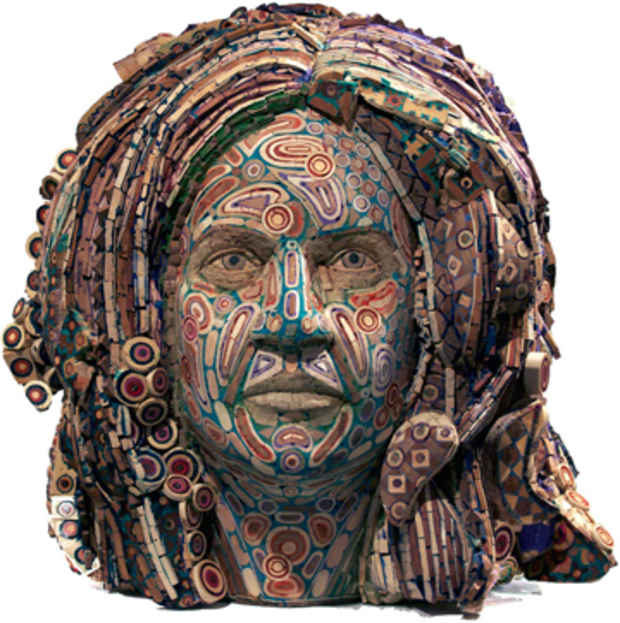Michael Ferris, Jr., "The Bronx Series, and Other Works"
Lehman College Art Gallery

This event has ended.
Michael Ferris’ intensely patterned, figurative sculptures are portraits based on actual people. This exhibition features recent sculpture, working drawings, and includes his new “Bronx Series,” based on people in the Morris Park neighborhood, where he has lived and worked for the last seven years. Ferris’ visually stunning sculpture is known for elaborate geometric patterning inspired by Middle Eastern inlaid gaming tables, a tradition connected to his Lebanese heritage. He shapes hundreds of small pieces of wood that are applied to the larger wooden surface, something like mosaics, in an overall pattern covering every inch of the surface. The medium is wood intarsia, a technique of inlaid wood or stone, developed in the 7th century in Islamic North Africa that spread throughout the Mediterranean and flourished during the Renaissance. Ferris’s approach to the figure is classical and embraces naturalism while his surfaces offer a counterpoint of geometry and color that animates the figure and hints at the persona within. In contrast to the surface cacophony, his subjects display a restrained sang-froid and call to mind the veracity of ancient Roman portrait busts as well as the candor of folk art.
All artists are influenced by the art they see around them and the art they study, and the sources that helped shape Ferris’ work are broad. Ferris grew up in Chicago in a home filled with art and crafts – from African masks to Outsider art – and was raised by parents who were also artists. The Chicago artists — the Imagists, the Hairy Who, and the Monster Roster — were a presence internationally as well as regionally, and one Ferris was aware of growing up. Many of these artists were figurative and their styles, often somewhat quirky, drew on surrealism, the comics, outsider art — all of which can be said to be found in Ferris’ work.
Michael Ferris begins by making drawings — and, they too, are lush, colorful, and heavily patterned. The drawings also offer a window into Ferris’ process from conception to the three-dimensional form. His initial sketches are straight portraits used to capture the subject’s likeness, demeanor, and various angles. They are generally developed from photographs that Ferris takes of the subject. Created with layers of transparent and opaque inks, the drawings provide a two–dimensional guide to the modeling of light and shadow on the subject. Later working drawings contain mathematical notations to help render proportions. In some, Ferris superimposes color and pattern on the subjects, providing a reference for possible surface design, but more often they seem a free rein of the imagination.
The sculptures are made from recycled wood – discarded furniture and “found” lumber – and a colorful grout made from sawdust and wood-glue that is pigmented with acrylic paint. Both the grout and the wood define the palette with bright colors and a range of beiges and browns — the natural tones of the wood. Ferris’ process is both additive and subtractive, building the work over a wooden armature that is then shaped with power tools – grinders, routers, sanders — and traditional hand tools. Additional wood pieces are applied with glue (and occasionally nails) then colored grout is added to create the rich patterning. The surfaces are sanded and reshaped, then more additions, in a process that continues. His surface geometry sometimes suggests hair, spinal bones, or musculature; at other times, it is an invention unrelated to the structure below the surface of the skin. The random way the wood is added seems intuitive and unlike the regimentation that geometry implies. For Ferris, there is a freedom to the building of the sculpture at this stage that appears to be pure improvisation, a riff on the rules of portraiture.
Media
Schedule
from February 07, 2012 to May 12, 2012
Opening Reception on 2012-03-19 from 18:00 to 20:00